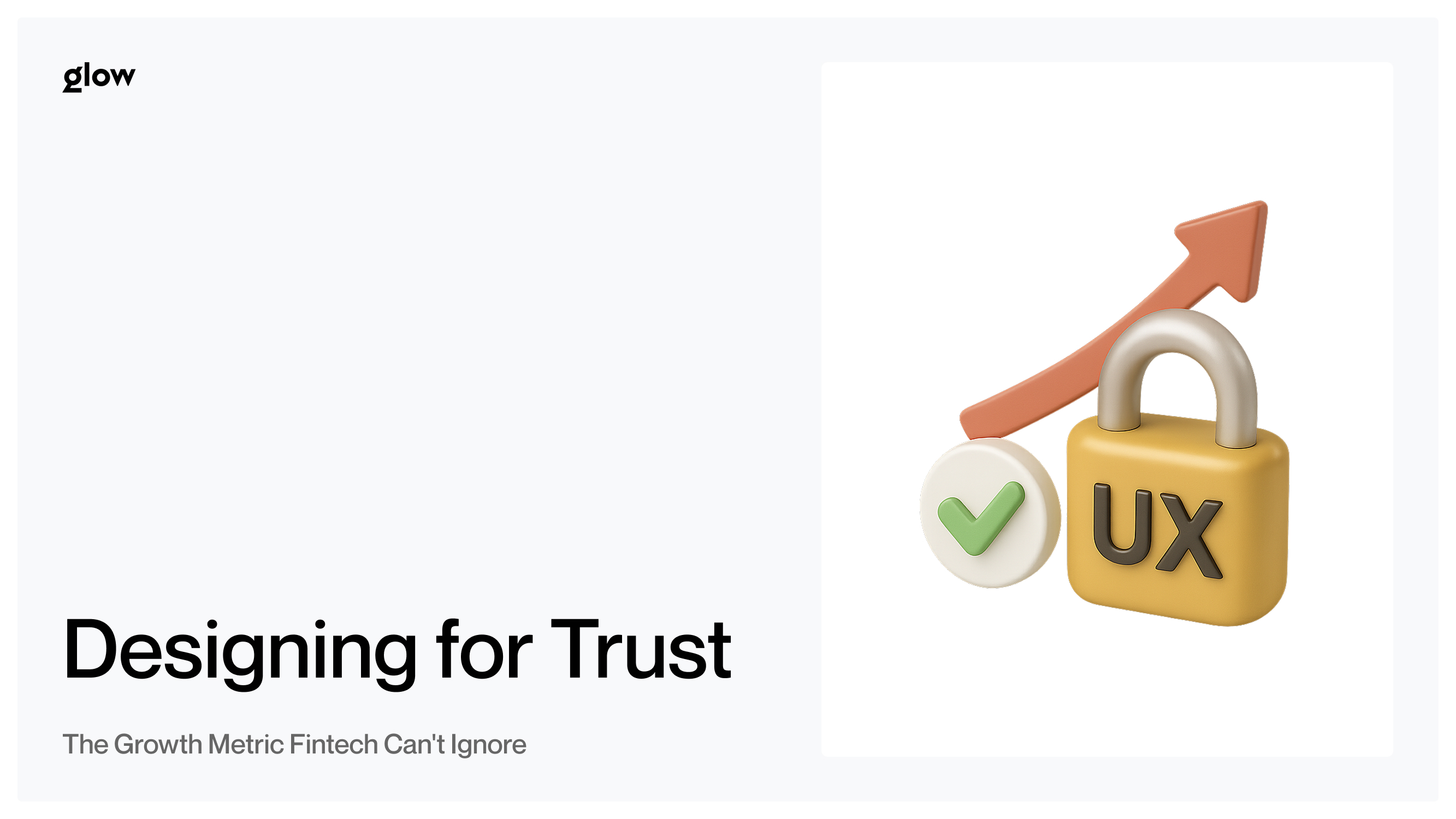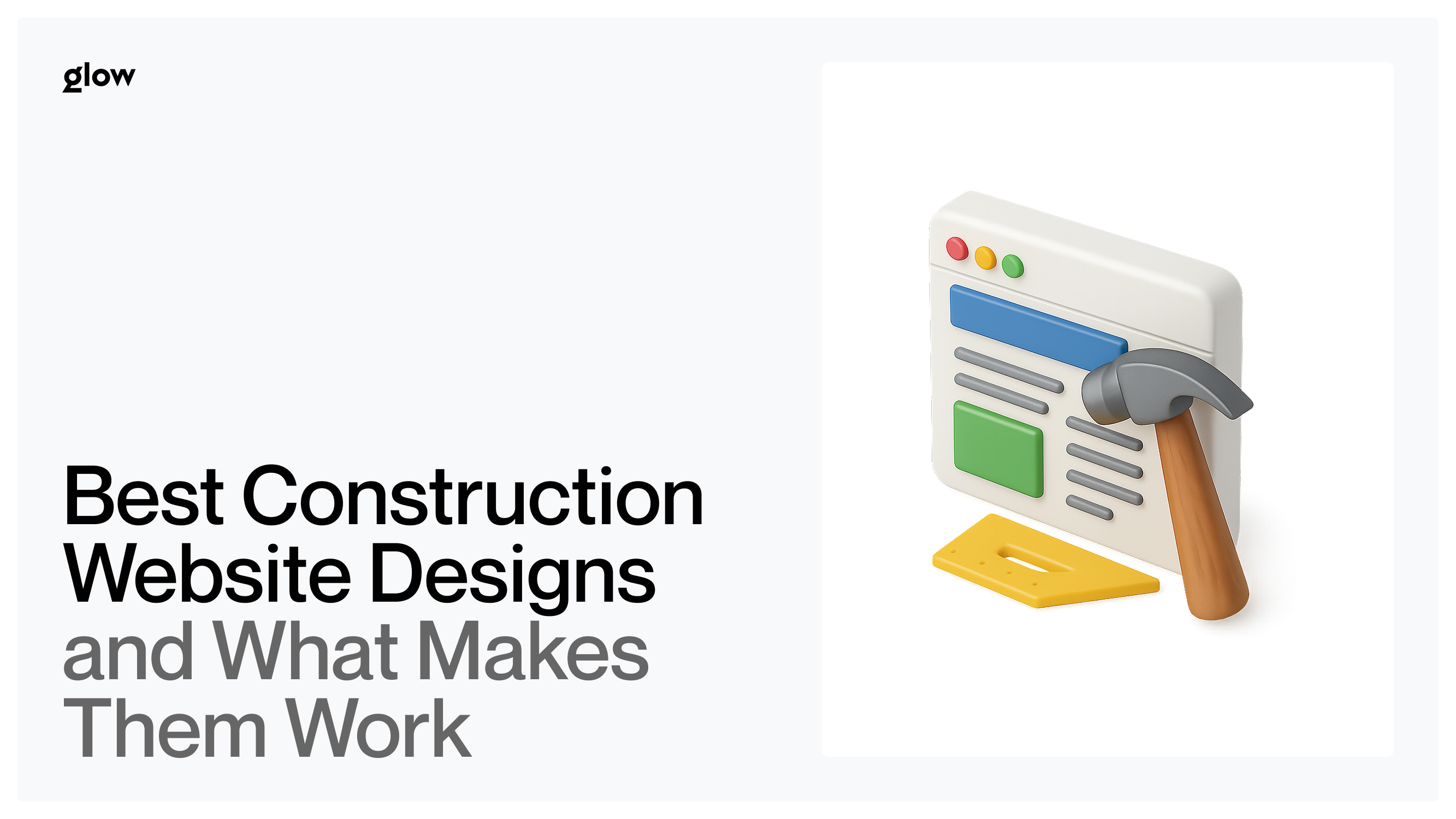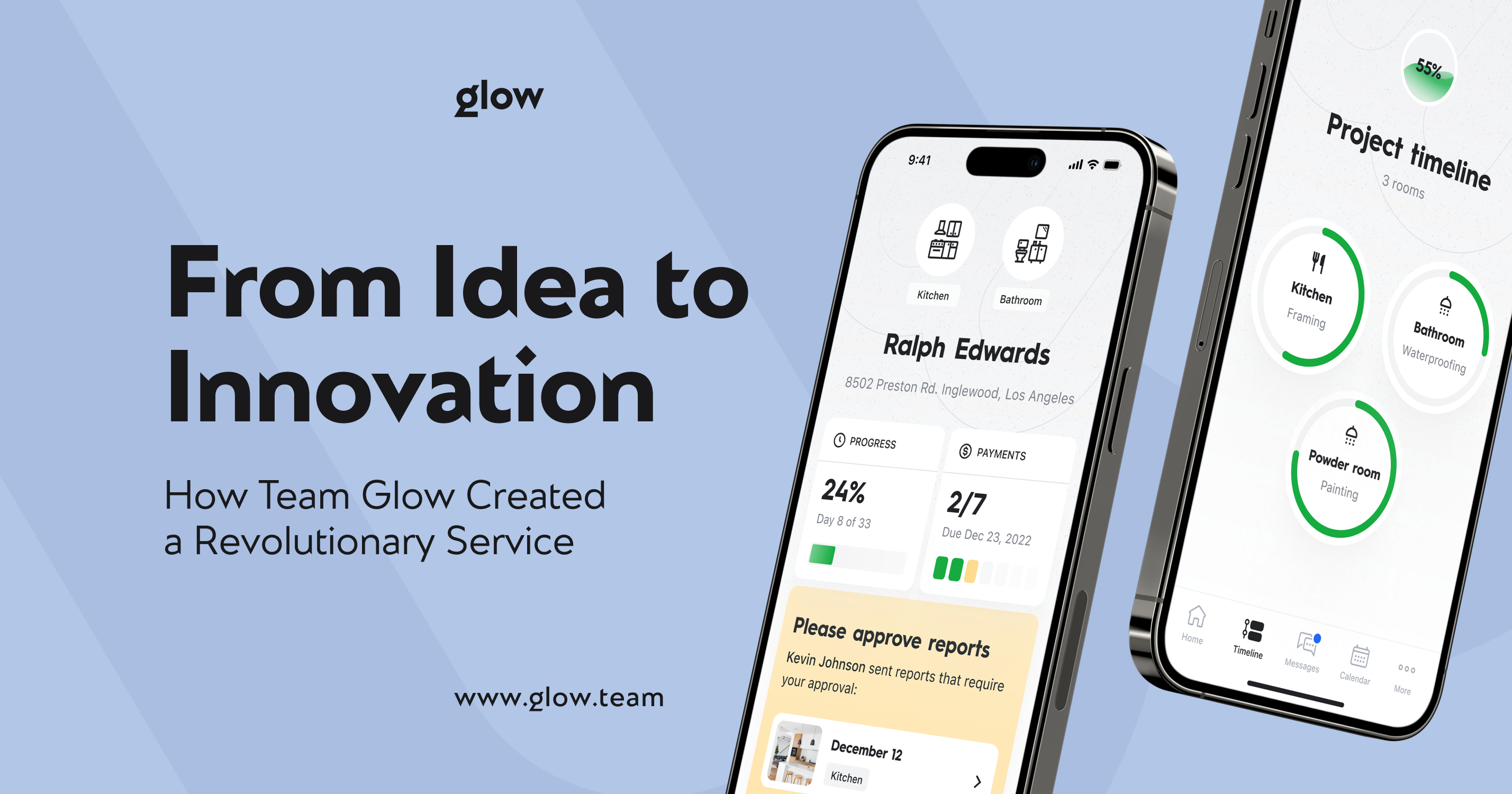In collaboration with Lendflow, we examine how design transforms embedded lending - and why trust has become the most valuable product feature in modern finance.
The Trust Gap in Modern Fintech

Picture this: a small business owner opens a loan application. They fill out three pages of forms, wait for loading screens, encounter unclear terms, and then... abandon the process entirely. Sound familiar?
In 2025, nearly 7 out of 10 credit applications online are abandoned. Not because of bad rates, but because of bad design. Long forms, hidden terms, confusing screens - each click that feels like an interrogation chips away at user confidence.
For lenders and fintechs that offer lending tools, this isn't a cosmetic issue. It's a revenue problem. Every time a customer connects their bank or applies for funding, they're handing over the financial DNA of their business. Whether they stay or drop off depends entirely on whether your platform feels trustworthy.
As Glow's research on digital banking UX shows, the highest conversion rates happen where there's no "digital interrogation" - no endless forms, hidden conditions, or confusing screens. A clarity-first approach in fintech apps directly drives adoption and lowers acquisition costs. This isn't about aesthetics - it's a strategy for user retention.
The Trust Equation: From Friction to Flow

The embedded finance market is valued between $125B and $146B in 2025, with projections soaring to $7.2 trillion by 2030. That growth won't be captured by whoever builds the flashiest algorithm - it will be won by the platforms that users trust enough to share their data.
As the Lendflow Ledger has highlighted, friction equals lost trust. And lost trust equals lost growth.
Why Trust Matters More Than Features
Case studies show that platforms with seamless, workflow-embedded integration outperform those relying on redirect models. Meanwhile, neutral embedded lending networks that provide multiple funding sources achieve:
- Higher approval rates
- Better borrower experiences
- Increased customer retention
- Lower drop-off rates during application
The pattern is clear: users choose platforms where they feel secure and informed, not platforms with the most features.
Four Rules for Designing Trust Into Finance

Building trust through design isn't about adding security badges or writing "Your data is safe" on every page. It's about making every interaction reinforce confidence. Here's how:
1. Show the Numbers First
Make APR, total payback, and repayment terms impossible to miss. Clarity signals honesty - a factor that's especially critical for multi-lender platforms.
Why it works: When users see transparent pricing upfront, they feel respected. Hidden fees or unclear terms trigger immediate distrust, even if your rates are competitive. As explored in our guide on how to create a trustworthy fintech app design, transparency is the foundation of user confidence.
2. Break Flows Into Human Steps
Multi-step applications convert up to 300% better than long single-page forms. Progressive disclosure reduces cognitive overload and makes onboarding feel achievable. These fintech UX design principles have been proven across hundreds of financial applications.
Best practices:
- Use progress indicators to show how much is left
- Group related questions together
- Save progress automatically
- Allow users to go back and edit previous steps
- Celebrate small completions along the way
3. Reassure With Signals, Not Slogans
A green checkmark, a progress bar, an instant upload confirmation - these tiny interactions build confidence faster than "Your data is safe" pop-ups.
Newer chatbot-driven lending flows show how conversational design makes processes feel more natural. Instead of filling out forms, users answer questions in a chat interface - mimicking how they'd talk to a loan officer in person.
Micro-interactions that build trust:
- Real-time validation ("Great, that looks correct!")
- Status updates ("Reviewing your application...")
- Clear error messages with solutions
- Visual confirmation of completed steps
4. Cut Days to Seconds With Automation
In 2025, AI systems already handle 78% of customer service inquiries, while predictive analytics enables underwriting decisions in seconds.
Speed isn't just convenient - it's trust-building. When approval happens in real-time, users feel like the platform truly understands their needs. AI-powered design systems are making it easier than ever to create intelligent, responsive lending experiences that adapt to each user's context.
Measuring Trust: The Metrics That Matter

How do you know if your design is building trust? Look beyond vanity metrics. Focus on:
- Application completion rate: The percentage of users who finish the entire flow
- Time to decision: How quickly users get answers
- Return rate: Whether users come back for additional products
- Support ticket volume: Fewer tickets often means clearer design
- Net Promoter Score (NPS): Would users recommend your platform?
The best platforms don't just track these metrics - they act on them. Regular user testing, A/B testing, and feedback loops help identify where trust is breaking down.
Trust as the Moat

With embedded finance heading toward $7.2 trillion by 2030, the question isn't whether the market will grow - it's who will capture that growth.
Features can be copied. Pricing can be undercut. But trust, once earned, compounds over time.
The companies that design for confidence - not just compliance - will own the next decade of SaaS and fintech growth. They'll be the ones who understand that every pixel, every interaction, and every line of copy either builds trust or destroys it.
Conclusion: Make Trust Your Product

In the race to build the most feature-rich lending platform, many fintechs forget the basics: people want to feel safe, understood, and respected when they share their financial information.
The highest-performing platforms aren't necessarily the ones with the most advanced algorithms. They're the ones that make users feel confident at every step.
As you build or refine your lending product, ask yourself:
- Does this screen make users more or less confident?
- Would I trust this flow with my own financial data?
- Are we designing for compliance, or for confidence?
The answers to these questions will determine whether your users complete applications - or abandon them.
Need help designing trust into your fintech product? At Glow, we specialize in creating fintech experiences that convert. From embedded lending to digital banking, we help companies build the kind of trust that drives sustainable growth.
For deeper dives into designing lending flows that convert, explore our partner piece in the Lendflow Ledger: "The Trust Equation: Designing Lending Flows That Convert."







